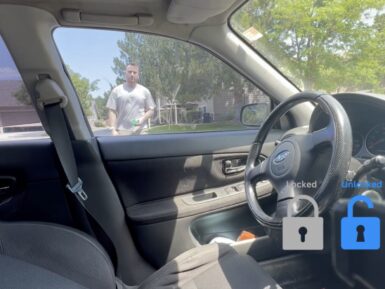
Overview
Great and powerful sensor for everyone that wants to know the exact concentration of CO2(Carbon Dioxide) in the air.
This is the first CO2 sensor compatible with Arduino. The output voltage of the module falls as the concentration of the CO2 increases. The potentiometer onboard is designed to set the threshold of voltage. As long as the CO2 concentration is high enough (the voltage is lower than the threshold), a digital signal (ON/OFF) will be released.
- It has MG-811 sensor module which is highly sensitive to CO2 and less sensitive to alcohol and CO, low humidity & temperature dependency.
- Onboard heating circuit brings the best temperature for sensor to function. Internal power boosting to 6V for heating sensor best performance.
- This sensor has an onboard conditioning circuit for amplifying output signal.
To ease the difficulty of using this CO2 sensor, a Gravity Interface is adapted to allow plug&play. The Arduino IO expansion shield is the best match for this CO2 senor connecting to your Arduino microcontroller.
This is an electrochemical Arduino-based CO2 sensor, it is suitable for qualitative analysis.
- Air Quality Control
- Ferment Process Control
- Room Temperature CO2 concentration Detection
DOCUMENTS
Tech specs
| Operating Voltage | 5V |
| Interface | Gravity Analog |
| Surface | Immersion gold surface |
| Connector | High quality |
| Output | One digital output |
| Onboard | Heating circuit |
| Size | 32x42mm (1.26x1.65") |
Get Inspired
Robot using Arduino Nano 33 BLE Camera Shield.

A lot of newer cars have a really nifty feature called “proximity unlock,” which automatically unlocks the doors when the driver approaches while carrying their key fob. When paired with a push-to-start ignition switch, the driver never has to take their keys out of their pocket. But Nick’s 2004 Subaru STI is too old to have come with that feature from the factory, so he used a couple of Arduino boards to create a DIY proximity unlock system. Car manufacturers need to pay serious attention to security when designing their access and ignition systems, but Nick had a bit more freedom. It is unlikely that any thieves would suspect his car of possessing a feature like this and so they wouldn’t even bother trying to hack it. Nick’s proximity unlock works by evaluating the received signal strength indicator (RSSI) of Bluetooth® Low Energy connection. If all else is equal, RSSI is inversely proportional to distance and that makes it useful for rough proximity detection. An Arduino Nano 33 BLE inside the car unlocks the doors when it has an active BLE connection with an RSSI over a set threshold. It unlocks the doors by shorting the switch with a 12V relay and it receives power from the car’s 12V system through a buck converter. The driver-carried device (equivalent to a key fob) can be either another Nano 33 BLE or Nick’s smartphone. In fact, it can be any device with a BLE adapter, so long as it can connect to the in-car Arduino with the proper device name. Now, Nick can enjoy his classic car and the convenience of proximity unlock.







